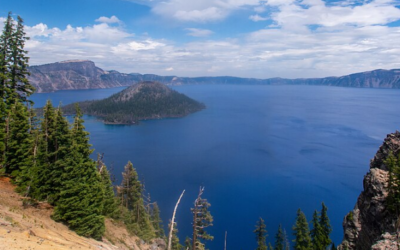Local governments have no shortage of reasons to invest in new parks. The available funding is incredibly abundant. It’s available because park enhancement projects deliver so many critical benefits – coastal resilience, economic development, greener environments, community enhancements and improved connectivity.
Public park projects can be funded from many sources, but one very lucrative source of funding is available because of local bond elections. A recent study revealed that, in one recent year, voters in the U.S. approved a cumulative $5.4 billion in local bond funding for park projects. That amount is indicative of what is generally happening annually.
Bond funding, however, is just one option. Since the time of that study, a wider array of support strategies has become associated with park developments.
Many cities are now using specially programmed taxes to develop parks with design benefits that extend well beyond traditional recreation uses. “Sin taxes” levied on purchases of alcohol and/or tobacco, for example, are being used for projects because the revenue collected from unhealthy activities can be used to promote a healthier, verdant environment for the community.
Another financing strategy involves districting. Municipal leaders are creating Tax Increment Financing Districts (TIFs) that draw on increases in property tax revenue collected. The new tax revenue is then available to fund improvements, such as parks, in that area of the community.
Business improvement districts (BIDs) are another lucrative source of funding for park developments. At the most basic level, BIDs are public-private partnerships that use escalating tax revenue from businesses within a defined area to fund public improvements therein.

Park projects are being launched throughout the country, and most of the initiatives tend to lean heavily on technology partners. Data collection is used at every stage – from planning to finally securing the area for safety. Recently, the New York City Department of Parks and Recreation awarded a $9 million contract to a private entity that will use state-of-the-art technology to re-configure parks, enhance recreational facilities and upgrade piers, marinas and waterfront assets throughout the city. All types of technology will be components of the final plan.
A proposed park in the Draper municipal area of Utah will be the lynchpin for one of the largest public projects in the state’s history. With a projected budget that will exceed a billion dollars, the effort will redevelop 600 acres of state-owned land that was once the site of a large prison. Site preparation and demolition are already underway. When this phase wraps up, officials will advertise contracts to establish the backbone infrastructure that will be required. Work will focus on construction of a central park which will link to a greenway that connects to the nearby Jordan River. The central park will serve as the anchor for a planned network of smaller parks covering 16 acres. The project will connect offices, housing and retail to lush greenspaces within a short walking distance.
In Corpus Christi, Texas, local leaders will use tax increment financing to develop a new park on 30 acres of city-owned land. The proposed North Eco Beach Park will be situated within a Tax Increment Reinvestment Zone. City leaders are authorized to use tax revenue generated within the area to fund up to $20 million in planned improvements. Area voters previously approved a bond measure to fund the design of wetland restoration components for the park project. In addition to the wetland restoration component of the project, it will also include a network of boardwalks, trails, vegetative buffering along an adjacent roadway, a living shoreline and multiple oyster reefs. Work on the project will begin later this summer.
In March, local leaders in Round Rock, Texas., approved a $277,000 contract to launch the design phase of a new park that will be located north of the city’s downtown district. The planning phase will be completed this summer and the construction phase of the project will begin in 2024. Funding for the project is included in the city’s $230 million parks and recreation-focused bond proposition that will go to the polls on May 6.
The New Jersey city of Hoboken has plans to convert the last remaining maritime industrial site along the Hudson River into a public park with climate resilience features. The park will be built on an 8.7-acre site that encompasses in-water property, an existing skatepark and a recently acquired landside property that cost the city $18.5 million. The project will provide the city of Hoboken with a cohesive waterfront park that also fills one of the last remaining gaps in the state’s broader New Jersey Hudson River Walkway. The project is in the design phase currently with a launch date expected in 2024.
Officials in Jersey City are designing a $15 million park project to stimulate economic development. An aging county administration building currently sits on the project site. Officials will decide what parts of the structure to preserve and demolish the rest as the building’s replacement is constructed across the street. A preliminary plan for the new Courthouse Park includes accommodations for commercial venues, new residential buildings and connectivity to local transit options.
Six different entities in the Cleveland, Ohio region are involved in a $300 million coastal resilience plan that will use dredged material to create and expand parks. Currently, officials are seeking community input. One goal of the project is to protect and enhance natural protections for critical infrastructure along the Cleveland Harbor shoreline while also providing several valuable public assets.
The city of Raleigh, N.C., owns 14 acres of land currently occupied by a maintenance yard and vehicle fleet facility. Officials plan to convert the property into a recreational area by creating a park. A budget of $17 million is currently in place for the project and the old public property will soon be called Smoky Hollow Park.
The city of Jacksonville, Fla., is in the design phase of a $26 million park project that will correlate with the city’s massive stadium project. Officials will continue to fine-tune the project’s design to ensure it corresponds with progress on the stadium in 2023. The plan is for the new park to bolster the riverfront’s status as a world-class tourist destination. Construction is expected to begin in 2024.







